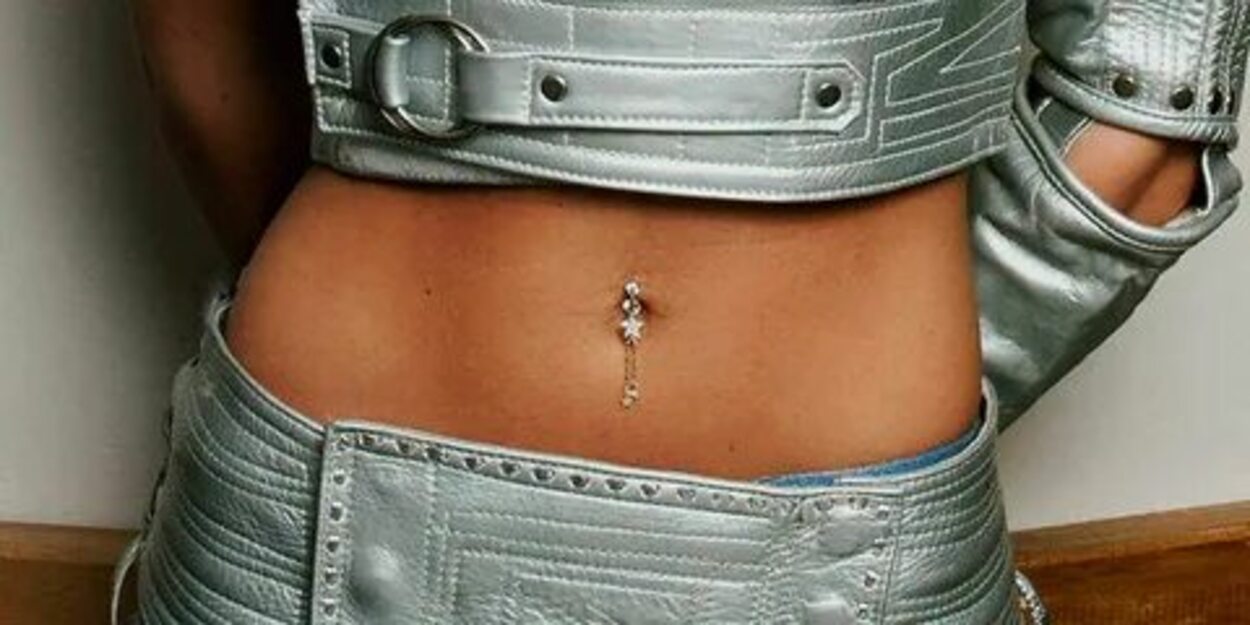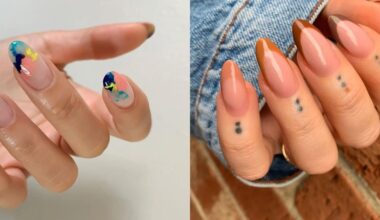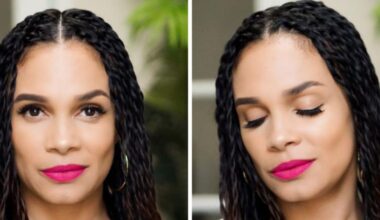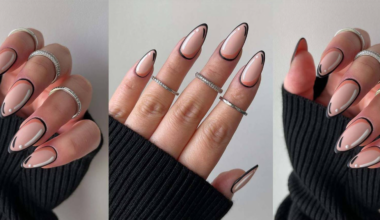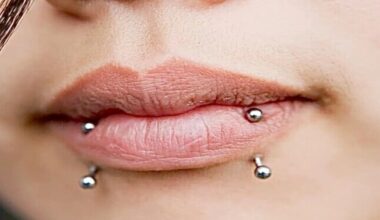The Belly Button Piercing, also known as the navel piercing, became popular in the 1990s when it began to appear on the bellies of pop stars such as Christina Aguilera. Although its popularity waned in the 2000s, it has made a comeback like no other.
The navel piercing typically pierces the skin above your belly button. This enables the jewellery to be worn inside the belly button. When summer arrives and you’re going through your crop tops, the belly piercing has a certain allure; what looks better peeking out of your summer attire on a sunny day?
What is Belly Button Piercing
Belly button piercings are often hidden beneath clothing, there are a few things to keep in mind during the healing process. Timing is everything when it comes to navel piercings. Here is everything you need to know about belly piercings.It is essential to keep in mind, however, that a piercing in the belly button is not suitable for everyone.
Due to the fact that these piercings are so dependent on a person’s anatomy, some piercers may refuse to perform the procedure or may suggest an alternative style of button piercing (such as a floating navel piercing) or location in lieu of the conventional style and placement.
If you are still interested in getting Belly Button Piercing, the best place to start is by looking for a licenced, experienced piercer who will work with your anatomy to give you the best piercing possible. If you are still interested in getting your belly button pierced, click here for more information. Keep reading to find out everything you need to know about the trendy piercing, and get started right away!
How Much Pain Does a Belly Button Piercing Cause?
Because the skin around the navel is quite fleshy, belly piercing is less painful than other types of piercings, such as cartilage piercings. However, because you are getting a puncture hole, there will be some discomfort.
Most people claim that the navel piercing pinches like an immunisation. If you have no trouble getting shots, you should be fine. The good news is that the procedure is quick, and any piercing pain will be minimal.
You’ll most likely experience some discomfort in the days following your belly piercing, such as swelling, throbbing, and aching. This is typical. If the piercing pain becomes unbearable, seek medical attention.
The Healing Process of Navel Piercing
It takes time for the navel piercing to heal. It will appear healed in a matter of weeks, but it will take 3 to 6 months for the piercing to heal internally. During that time, you must maintain aftercare practises, including refraining from swimming. It can take up to a year for some piercings to completely heal, so consult with your piercer before discontinuing aftercare practises.
Aftercare Guidelines for Navel Piercing Healing
The belly button piercing aftercare follows standard procedures, but because it is located on the body, there are a few things to keep in mind as it heals.
1. Avoid going to the beach:
Belly piercings shine brightest in warm environments. However, while it is healing, keep it away from pools, standing water, sandy areas, and anything else that could harbour harmful bacteria. Sandy beaches can introduce foreign particles into the piercing, potentially causing infection. Instead, sit by the pool (but don’t go in until you’re completely healed).
2. Check that your initial jewellery is the correct size:
Rejection and migration can happen in any piercing, but it appears to be more common in navel piercings. Rejection can occur for a variety of reasons, such as using cheap metal for your jewellery, but it is often due to the size of your belly button piercing jewellery.
Make sure your barbell is long enough to allow for swelling but small enough that the weight of it does not pull on your piercing. Wait until your piercing is completely healed before wearing dangle belly button rings.
If you suspect you’re rejecting the jewellery, see your piercer as soon as possible so they can offer you alternatives. Rejected jewellery is rarely dangerous, but it does leave permanent scars.
3. Every day, take a saline soak or a salt bath:
The navel piercing’s location makes it difficult to keep clean, but there is a simple solution. Either make your own sea salt solution (make sure it’s properly mixed, uses only distilled water and non-iodized salt, and is stored in a sterile environment) or buy piercing aftercare saline solution.
Place the solution in a small paper cup large enough to hold your belly button jewellery, lean over the cup, dip your piercing inside, and press the cup’s rim to your belly, sucking the cup to your body. You can then (carefully) move around with the cup on your belly for the duration of the 5-minute soak.
4. Take care of your clothing.
New belly jewellery is incredibly easy to snag. A powerful snare could completely rip the jewellery from your belly button. Even minor snags should not be ignored; repeated tugging at the jewellery may result in hypertrophic scarring or other complications that will affect you in the long run.
Choose clothing that has few snag points. Wear baggier clothing that will not press or tug on your jewellery. If you’re concerned, you can always wrap the jewellery in a large bandage to keep it from snagging while healing.
Styles of Navel Jewelry
Your first piece of navel piercing jewellery will be a simple, non-dangle belly ring. A 14G needle will almost always be used to pierce you. You can choose a 12G or 16G, but your piercer may advise you against it; the 14G is industry standard for safety reasons.
Your first piece of jewellery will need to be large enough to accommodate swelling, so you will most likely be fitted with a 7/16″ barbell, but this can be changed once the swelling subsides. Make sure to have the jewellery changed by a piercer while you’re healing.
You could stick with the non-dangle look. A standard Belly Button Piercing ring adds a glint of sparkle to your belly button while remaining understated. Glamourous jewellery with diamonds or other gemstones is available, as are cute navel rings with charms and other fun items.
Dangle Belly Ring
Check out dangle belly rings for a little extra flair. A dangle belly ring has a charm that dangles from the bottom of the ring, creating a cute look right below the belly button. Dangle belly rings look especially cute with bikinis or other body-baring outfits.
Charms on reverse dangle belly rings dangle from the top of the jewellery rather than the bottom. The jewellery will cascade in front of the navel. The reverse dangle belly ring style is ideal for those who enjoy luxurious jewellery and want their belly jewellery to take centre stage.
Why Should I Avoid Getting a Belly Piercing?
Because of their anatomy, some people may be unable to get a belly piercing. If you’re concerned, speak with a piercer and have them examine your piercing.It takes time for a belly piercing to heal. You might be tempted to get your navel pierced in the spring because summer is approaching and you know it will look great with your new swimsuit.
It is, however, best to get your belly pierced in the fall. That way, you’ll have plenty of time to heal before showing off your piercing this summer. Be cautious; a navel piercing can sometimes take up to a year to heal, so consult with your piercer before diving in.
If you already have aPiercing and become pregnant, you should be fine; a healed piercing can often be left in until the day your water breaks. However, getting a belly piercing while pregnant or trying to get pregnant is not advised. Aside from the fact that a healing piercing necessitates a healthy immune system, your changing belly size will affect your new piercing, potentially causing complications.
What will it cost?
A belly button piercing price is between $30 and $70. As with any piercing, experience trumps price. Choose a piercer who does not use a piercing gun. To avoid rejection with belly piercings, it’s critical that your piercer understands the proper jewellery size to use, so choose an expert piercer.
Belly Piercing Variations
You might think that the Belly Button Piercing is simple, but there are several variations to this popular piercing. Bottom button piercings the skin beneath the belly button rather than above it. This piercing is ideal for those who prefer lower-hanging jewellery than the standard belly piercing.
The double piercing adds some variety. It consists essentially of an additional piercing above, below, or to the side of your belly button. The most common are vertical double piercings. A regular belly piercing and a bottom navel piercing are combined to form the vertical double belly piercing.
You can create an alluring look by selecting a standard belly ring for each piercing. You can also use charms and dangles to create a beautiful cascading effect.
Read More.
